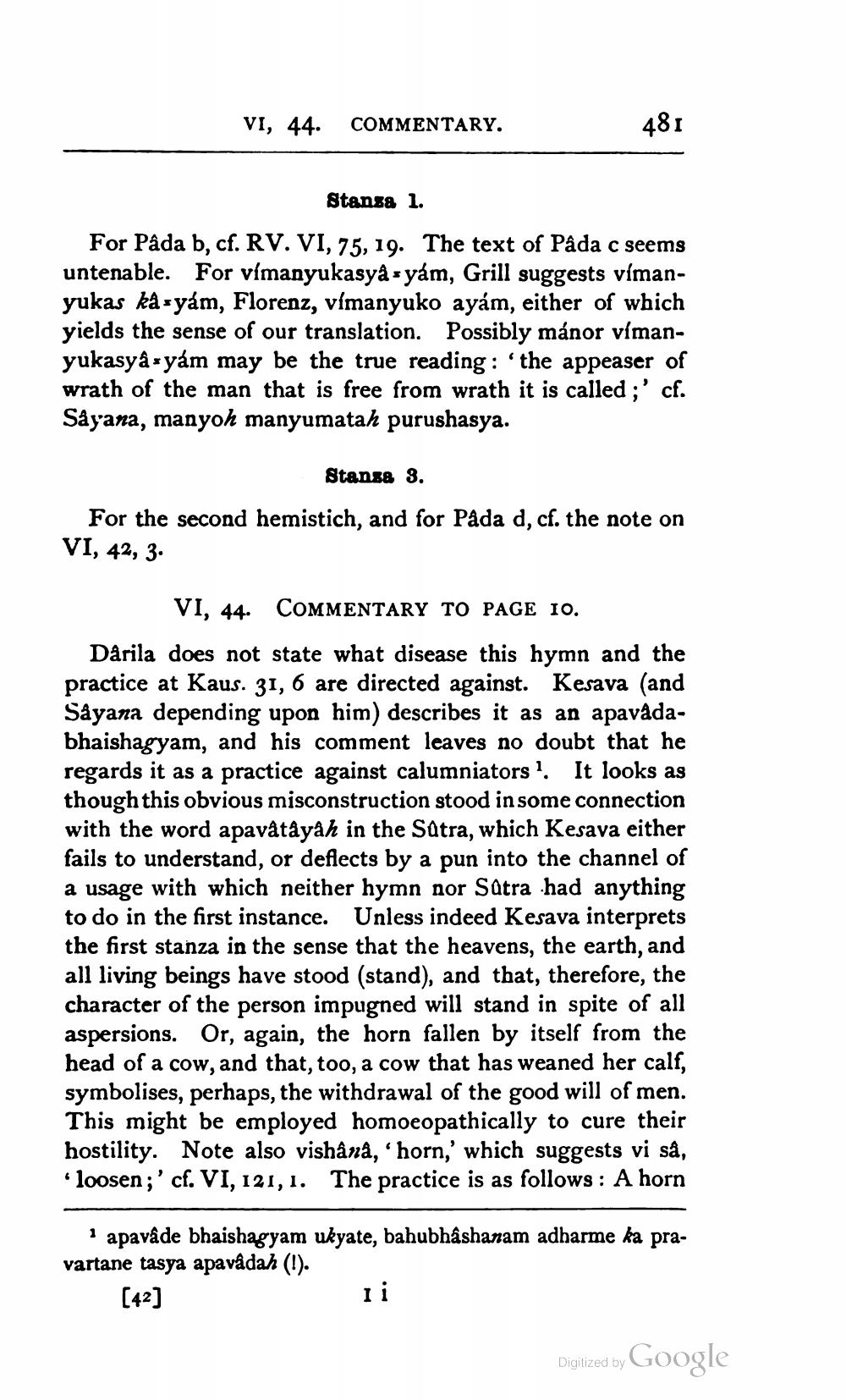________________
VI, 44. COMMENTARY.
481
Stansa 1. For Pâda b, cf. RV. VI, 75, 19. The text of Pâda c seems untenable. For vimanyukasya syám, Grill suggests vímanyukas ka syám, Florenz, vímanyuko ayám, either of which yields the sense of our translation. Possibly mánor vímanyukasyayám may be the true reading : 'the appeaser of wrath of the man that is free from wrath it is called ;' cf. Såyana, manyoh manyumatah purushasya.
Stansa 3. For the second hemistich, and for Påda d, cf. the note on
VI, 42, 3.
VI, 44. COMMENTARY TO PAGE 10. Darila does not state what disease this hymn and the practice at Kaus. 31, 6 are directed against. Kesava (and Såyana depending upon him) describes it as an apavadabhaishagyam, and his comment leaves no doubt that he regards it as a practice against calumniators. It looks as though this obvious misconstruction stood in some connection with the word apavâtåyåh in the Satra, which Kesava either fails to understand, or deflects by a pun into the channel of a usage with which neither hymn nor Satra had anything to do in the first instance. Unless indeed Kesava interprets the first stanza in the sense that the heavens, the earth, and all living beings have stood (stand), and that, therefore, the character of the person impugned will stand in spite of all aspersions. Or, again, the horn fallen by itself from the head of a cow, and that, too, a cow that has weaned her calf, symbolises, perhaps, the withdrawal of the good will of men. This might be employed homoeopathically to cure their hostility. Note also vishana, horn,' which suggests vi så, * loosen;' cf. VI, 121, 1. The practice is as follows: A horn
apavâde bhaishagyam ukyate, bahubhashanam adharme ka pravartane tasya apavâdah (1). [42]
ii
Digized by Google




